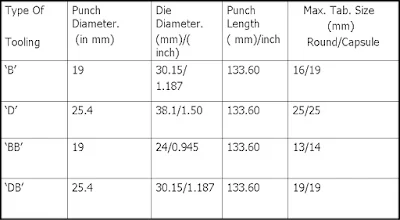Solid Dosage Form
Drug substances are frequently administered orally by means of solid dosage forms such as Tablets and Capsules.
Definition of Tablets
Tablets can be defined as Solid Pharmaceutical Dosage form containing drug substances with or without suitable diluent and prepare either by compression or molding methods.
There are various types of Tablets and abbreviations used in referring to them are as follows.
1.Compressed Tablets (CT)
2.Sugar-Coated Tablets (SCT)
3.Film-Coated Tablets (FCT)
4.Enteric-Coated Tablets (ECT)
5.Multiple Compressed tablets (MCT)
Layered Tablets
Press-Coated Tablets.
Press-Coated Tablets.
6.Controlled Release tablets.
7.Tablets for Solution.
8.Effervescent tablets.
9.Compressed Suppositories or inserts.
10.Buccal and Sublingual Tablets.
11.Vag*inal tablets.
12.Lozenges.
13.Implants.
Types of Tablets
 Compressed Tablets: These tablets are formed by compression and contain no special coating. They are made from a powdered, crystalline or granular material, alone or in combination with binders, disintegrants, lubricants, diluents and in many cases, colorants.
Compressed Tablets: These tablets are formed by compression and contain no special coating. They are made from a powdered, crystalline or granular material, alone or in combination with binders, disintegrants, lubricants, diluents and in many cases, colorants.
For different types of tablets as per their usage, market requirement, elegance etc.
Tablet Tooling
Flat- faced bevel- edged.
Shallow concave (Round/ Capsule shaped)
Standard concave (Round/ Capsule shaped)
Deep concave (Round/ Capsule shaped)
Extra deep.
Modified ball
The basic mechanical unit in all tablet-compression equipment includes a lower punch which fits into a die from the bottom and an upper punch, having a head of the same shape and dimensions, which enters the die cavity from the top after tablet material fills the die cavity.
The basic mechanical unit in all tablet-compression equipment includes a lower punch which fits into a die from the bottom and an upper punch, having a head of the same shape and dimensions, which enters the die cavity from the top after tablet material fills the die cavity.
PROCUREMENT OF TOOLING
While ordering any punch set (From Approved Supplier only), following things should be covered:
1.Drawing for upper/lower punch/die, by the manufacturer as per the specifications are given or as per sample punch set.
2.Following details should be given with the purchase order:
• Total number of set required
• Type of punch set eg. D/B/BB etc.
• MOC to be used (HCHC/OHNS)
HCHC: High Carbon High Chromium
OHNS: Oil Hardened non-shrinking Steel
• Engraving details; Sr. no., Mfr name, Date of Mfg., Punch size in mm.
• Special requirements like: Concavity, embossing, chrome plating etc.
Tablet Tooling
‘B’ -Tooling
‘D’ - Tooling
‘BB’ -Tooling
'DB’ - Tooling
Approval of drawing /sample punch set from department head and unit head.
'DB’ - Tooling
Approval of drawing /sample punch set from department head and unit head.
These are the different types of tooling, their dimensions and maximum possible tablet sizes.
Tablet Tooling Terminology
Following definitions for direct terminology for tooling (Punches and dies).
1. Head: The end of the punch that guides it through the cam track of tablet machine during rotation.
2. Head flat (Dwell Flat): The flat area of the head that receives the compression force from rollers (in upper punches) and determines the weight and ejection height (in lower punches).
3. Outside head Angle: The area gets in touch with the roller prior to head flat, while compression.
Inside Head Angle: This is the area, which pulls down the lower punches after ejection and lifts the upper punches after compression.
4. Neck: The relieved area between the head and barrel, which provides clearance for the cams.
5. Barrel: This area guides the punch (while going up and down) with reference to turret guides.
6. Stem: The area of the punch opposite the head, beginning at the tip and extending to the point where the full diameter of the barrel begins. If the chamfer is present the barrel usually reaches its full diameter just above the chamber.
7. Tip: This determines size, shape & profile of the tablet.
8. Tip face: This area of punch is where the tablet is formed. Good surface finish is required here to bet quality tablets.
9. Working length: This distance between the bottom of the cup and the head flat is called as working length which determines weight and thickness of the tablet.
10. Overall length: Distance between top of the cup and the head flat.
11. Key Angle: The relationship of the punch key to the tablet shape. The keys position is influenced by the tablet shape, take-off angle, and turret rotation.
12. Domed Heads: Increases the dwell time and hence help to achieve the better tablet hardness.
13. Dwell time: The time punches spends below the pressure roller while rotating in the machine.



Hi sir, good morning
ReplyDelete...kindly help me how to choose the tablet punch size for compression according to tablets average weight.
Thanks for nice & important information!
ReplyDeleteIf the descriptions could contain a complete set of die & punch, then it could be very much easier to us.